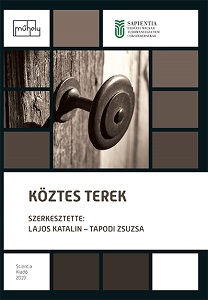
We kindly inform you that, as long as the subject affiliation of our 300.000+ articles is in progress, you might get unsufficient or no results on your third level or second level search. In this case, please broaden your search criteria.



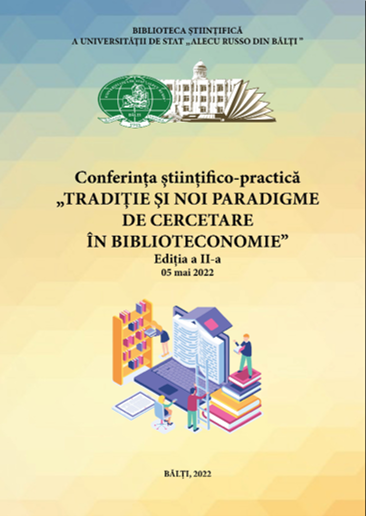
The most representative moments from the life and work of the Romanian playwright and novelist Ion Luca Caragiale are reflected in the communication. Also, the most important works of the writer from the collection of the USARB Scientific Library are used.
More...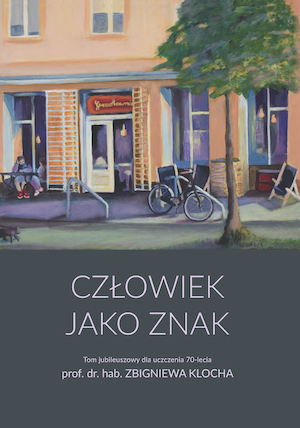
In the essay, Polish intelligents were treated as network nodes that as signs in the social system appeared walking, standing and sitting. This symbolic view of their role indicates their importance in giving meaning to Polish national space.
More...
In Russia Adam Mickiewicz quickly earned respect and a prominent position in the democratic literary society. Konrad Wallenrod, translated in prose by Stefan Shevyriev and published in 1828 a few months after the Polish edition immediately became very popular and by 1834 its fragments had been translated twenty times. The reception of the poem is paradoxical; in a description of the withdrawal of freezing Teutonic Knights defeated by Lithuanians the Russians saw Napoleon’s flight from Moscow. Thus, surprisingly, a picture of the same event captured in a poem about a fight for freedom has a different meaning to two nations. Therefore Konrad Wallenrod confirms Stefanowska’s thesis of “poetry dominating over truth”.
More...
The title character in Aleksander Fredro’s comedy Pan Jowialski [Mr Jovial] has been a bone of contention for scholars interpreting the work ever since its world premiere in Lwów in 1832. The paper briefly outlines the main threads in these disputes and proposes a new interpretive perspective. An analysis of Act IV, Scene 1 reveals that the allegorical picture sketched by Wiktor the painter is based on entries from Rev. Alojzy Osiński’s "Słownik mitologiczny" ["Dictionary of Mythology"] (Warszawa 1806–1812). Fredro had this book in his reference library. Transformations and modifications of dictionary expressions enable Fredro to create his own allegorical composition engaging all of the stage characters. Jowialski himself becomes this world’s central figure: “Jove”. This scene, usually shrugged off as a “stage gag”, might thus be recognised as the playwright’s instructions explaining the scheme of the whole comedy.
More...
The title’s “no biography” points directly to the aim of the paper, namely an interpretation of Jarosław Iwaszkiewicz’s Tatarak [Calamus] that suspends the biographical context. This particular work in the writer’s oeuvre seems to require such a construal. When read – most often – as a text that is autobiographical or contains evident references to the writer’s biography, it loses its uniqueness. It thus becomes little more than an excuse for increasingly bold comparisons between the feelings of the protagonist, Marta, and the passion felt by Iwaszkiewicz himself from his infatuation with a much younger man. Meanwhile, the artistic magnitude of this short story by no means lies in any biographical context, but in the system of meanings it creates and utilises. Starting from the composition (including a story-within-a-story structure), through the portrayal of the characters, all the way to the significance of the title’s sweet-flag plant.
More...
The text “Body of Grochowiak. Turpism or resurrection” is an analysis of Stanislaw Grochowiak’s poetic aesthetics, through the prism of how he describes the human body. The author questions the thesis, well-established in literary research, that Grochowiak was a turpist poet, focused on death, ugliness and pain. However, it shows how important the context in which the poet was creating is. Showing humanity through images devoid of Arcadian beauty is a fuller perspective, thanks to which poetry becomes more human, helps to disenchant the cruel reality by giving new meanings to suffering. It can not only become a companion of everyday life, but also help to find a language to tell about the post-war reality, often filled with pain and lack of hope.
More...
The article analyses the problem of recognition of sings and relevant understanding of their respective meanings, as well as the question of in what ways interpretative hypotheses determining the content of a literary work are conditional upon the reader’s cultural competencies and worldview assumptions. These considerations are related to my interpretation of Nabokov’s short story Signs and Symbols, which turns into a series of alternative readings. The ambiguity of the Nabokov text can be regarded as an expression of the author’s cognitive relativism. The proposed analysis leads to the conclusion that the story is about a cognitive drama of a human who endeavours to understand what is (or is not) a sign and what is happening in the reality surrounding him.
More...
The author reviews a number of old newspapers, dated between 1793 and 1918 (access to a wider selection was not possible due to the prevailing pandemic). He draws particular attention to news items and to small advertisements, which document the lives of ordinary people against a background of major historical events. Finally, he presents a short anthology of small ads placed on the Internet during the current pandemic.
More...
In contrast to the great Hollywood productions, ancient mythology entered Soviet screens in the form of animated cartoons for children. Ideological by nature, USSR culture adopted and changed for its needs also ancient myths and their heroes. This article analyses what changes took place and what meaning ancient heroes acquired in Soviet productions of the 1970s and 1980s. The subject of the analysis is the series of animations “Legends and Myths of Ancient Greece” (1969–1974) directed by Aleksandra Snezhko-Blotskaia and the film “Narodziny Heraklesa” (1982) directed by Yulian Kalisher.
More...
The paper refers to the film directed by Lech Majewski titled "The Garden of Earthly Delights". The author of this paper suggests an interpretation built on nihilism to be able to show that human is a kind of mistake of nothingness. We can think about art in a similar way that means that art is a kind of mistake of life in a biological sense. The word mistake can find positive meanings, but it depends of the experience of love, good or beauty. The film "The Garden of Earthly Delights" functions as the image full of intertextual connections is worth of cognition and understanding.
More...
The article focuses on the role of photography in the film “Another Day of Life” inspired by Ryszard Kapuściński’s prose of the same title. Photography was used to prepare artistic concepts and create the figure of main characters. Photography as an element of the film material was subject to activity similar to the collage method. As a semantic element, the act of photographing allowed to mark the moment of blurring the boundaries between text and image in the process of getting to know the world and blurring spatial relations. These ambiguous decisions were used by the authors to tell about Kapuściński’s birth as a writer.
More...
In this text the author reflects on the semiotic existence of culture discourses in connection with the rapid development of digital technology. The author analyzes selected texts of digital art as examples of the transformation in how works of literature, sculpture, or film exist. The article covers how movable font, which changes in shape and color, participates in shaping literary meanings; the creation of semiotic and interactive figures; the textualization of the user’s actions and body; dematerialization; processuality; narrativization; the temporalizing of sculpture which changes before the eyes of the recipient; the presence of alternative narratives in literature and film; multi-variant plots co-created by the recipient; and the artistic use of other discourses. The author proves that the structure and specificity of the digital sign lies at the base of the changes. The digital sign is immaterial, programmable, and hybrid, and combines aspects of expression, meaning, and action, which makes it efficient.
More...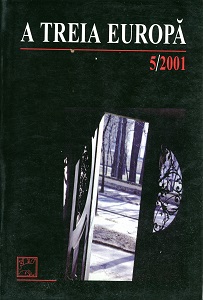
Apărut în ajunul celui de-al doilea război mondial, romanul scriitorului și jurnalistului maghiar Mârai Sândor este un produs tipic central-european, un fel de manual de inițiere în istoria mentalităților Europei mediane, o carte care se potrivește aproape perfect într-o grilă de lectură pe care cititorul o poate folosi cu același succes ca în cazul romanelor lui Joseph Roth, de pildă. Aceasta, însă, nu o face mai puțin ofertantă sau imprevizibilă.
More...
Formula „geometrie variabilă” reprezintă unul dintre locurile comune cu care este desemnată Europa Centrală. Sintagmă generoasă, ea poate să migreze și către alte zone ale discursului ; un exemplu în care transmutarea se poate face cu succes ni-I oferă proza modernă.
More...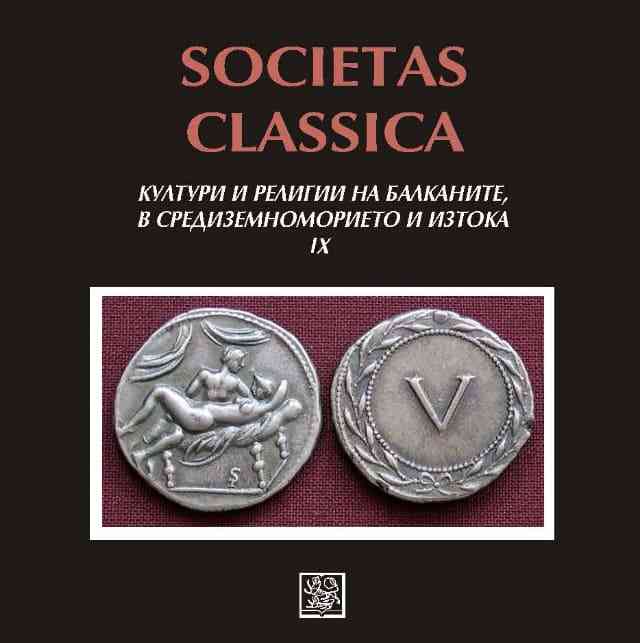
Walahfrid Strabo was a celebrated poet and theologian of the 9th century. He lived and studied mainly in Reichenau, a monastery in modern Germany, where he was monk and at some point abbot. His education covered the Scripture, the writings of the Holy Fathers, as well as Latin, Greek, geography, poetry and the liberal arts. Walahfrid’s many works, written in Latin, consist of theological treatises in prose and many poems on different subjects. Among them is a poem on gardening and the medicinal uses of the plants titled „De cultura hortorum” – „On the cultivation of gardens”. The poem has many scientific and poetical sources: Pliny the Elder, Collumela, Dioscorides, Celsus, Serenus Sammonicus, Pliny Valerianus, Apuleus Platonicus, Isidore of Seville, Virgil, Horace, Lucretius Carus. Strabo used his sources creatively, with a view to do more than just another compilation. He used the words and phrases he found as building blocks in order to come up with a new, contemporary concept for both aesthetics and utility. He is believed to have served as a monastery gardener himself, so likely fused his ideas and practical experience with the received literary tradition of his time. He thus created a unique snapshot of a real life cloister garden – his own garden – both authentic and ideal.
More...
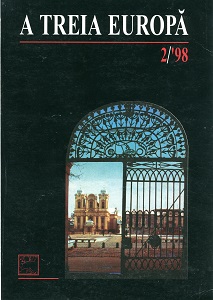
Opera lui Franz Kafka a exercitat asupra exegezei marxiste o atracție aproape hipnotică. Fapt straniu, dacă e să lăsăm deoparte psihanaliza literară sau hermeneutica de redacție mistică, niciunde altundeva interesul pentru acest scriitor nu s-a manifestat atât de intens ca în tabăra criticilor marxiști. Mai mult încă decât opera, biografia scriitorului - sau mai precis comerțul intens pe care aceasta s-a presupus că l-ar întreține cu textele propriu-zise - a devenit un argument teribil, în spatele căruia marxismul literar, dar și alte formule critice abuzive au putut să debordeze.
More...